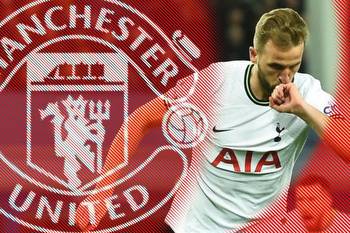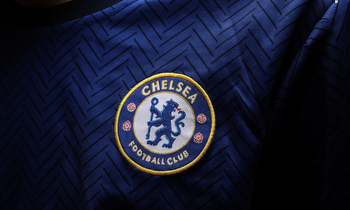Premier League 2023, EPL news, Chelsea signings, transfers, Enzo Fernandez, fee: Todd Boehly spending analysed

When American billionaire Todd Boehly and his cashed-up consortium completed a record £4.25 billion takeover of Premier League giants Chelsea in May 2022, he didn’t hold back on his promises.
They would redevelop the iconic Stamford Bridge stadium, pour money into the already-renowned Academy, and splash the cash on their women’s team and its Kingsmeadow stadium.
And, of course, they promised to strengthen the squad by “acquiring the best talent.” In that £4.25bn takeover deal, a whopping £1.75bn was earmarked for investment into the club. But few predicted the Blues would fork out over 1 billion Australian dollars in their first two transfer windows.
In the (English) summer transfer window at the outset of this Premier League campaign, Chelsea spent around £270m. It was a Premier League record, and the second-highest amount ever spent in an off-season after Real Madrid’s staggering £292m in 2019.
Compare that to the prediction from highly-respected football finance expert Kieran Maguire, a lecturer at Liverpool University, quoted by Sky Sports just after the takeover last May: “I suspect the Toddy Boehly group, especially as they’re backed by Clearlake Capital, will take a more data analytical and more Moneyball approach in terms of player recruitment.”
Moneyball? It was more like Powerball: Chelsea were spending like they just won the lottery.
It included £69.5m on Leicester defender Wesley Fofana, £56m on Brighton defender Marc Cucurella, and £47.5m on Manchester City’s English forward Raheem Sterling.
Having finished third in the league the season before, as well as runners-up in both the FA Cup and EFL Cup, optimism over a potential title challenge was growing by the day. But it didn’t take long for things to sour. Coach Thomas Tuchel was sacked in early September. The Blues now sit in 10th place on the ladder, a full 21 points behind leaders Arsenal despite having played one more match. Plus they’ve already been dumped out of the FA Cup and EFL Cup in the third round of each competition.
Undaunted by their troublesome first half of the season, the Blues’ new bosses did not stray from their big-spending ways when it came to January. When the transfer window closed yesterday, Chelsea had again smashed the Premier League record by spending a total of £323m ($A563m) on eight arrivals. It was FIVE times more than their nearest rivals Southampton. In a staggering display of their buying power, Chelsea’s spend was also more than every club from La Liga (Spain), Ligue 1 (France), the Bundesliga (Germany), and Serie A (Italy) combined. And it was all capped off with a Premier League record fee of £106.8m for 22-year-old midfielder Enzo Fernandez.
It took their total spend to around £600m ($A1.044bn) in two transfer windows, with around £49m coming in via player sales. That net spend is comfortably more than double nearest rivals Manchester United whose net spend was just over 200 million pounds.
The figures are breathtaking.
The obvious question that follows is this: How have Chelsea managed to spend so much yet stay within UEFA’s Financial Fair Play rules?
The answer is multifaceted. But at its heart is an extremely risky strategy that could make or break the Blues in the years to come.
THE RULES
UEFA – the body overseeing European football – has for years attempted to curb the rampant inflation in the footballing market, with a particular focus on clubs spending well beyond their means. An influx of mega-rich owners pouring money into clubs has seen wages and transfer fees skyrocket this century – with squad-building and transfer windows turning into a virtual arms race between Europe’s biggest clubs.
Under UEFA’s current rules, teams can spend 30m euros more than they earn over a three-year period if that amount is fully paid by the club’s owner (otherwise the maximum is 5m euros over a three-year period). The punishments that can be levied for breaching these rules are sweeping, from warnings and fines to bans from European competitions.
The Premier League has its own rules: £105m in total losses over a three-year period – a figure that is relatively comfortable even for big-spending clubs like Chelsea.
But in June, UEFA introduced new rules to level the playing field. The Financial Sustainability and Club Licensing Regulations (FSCLR) features a “squad cost control” limit. This season, clubs can spend 90 per cent of their calendar-year revenue on player wages, transfers (net spend) and agents’ fees. While that’s hardly limiting, it drops to 80 percent next year and to 70 percent the following year.
But at the same time, UEFA has also massively increased the limit on permitted losses to 60m euros over a three-year period.
What that means is teams have an opportunity to spend big now before the full impact of those new restrictions hits home. And Chelsea has taken full advantage.
Souttar set for Premier League at last! | 00:25
HOW THE BLUES DID IT
The Blues’ spending spree was facilitated by their success in recent years. In 2021, Chelsea hoisted the Champions League trophy and won the Super Cup, earning them a combined payday around £119 million. Meanwhile, Maguire told the BBC that Chelsea’s latest accounts – up to 2021 – showed their three-year FFP losses were around £5m in his estimation. Even before Boehly’s consortium poured money into the club, Chelsea’s success on the field paved the way for a spending spree.
But there was another big factor in the Blues finances that allowed them to smash records this transfer window. The Blues boast one of the finest youth academies in the world. The club has four England internationals in the current squad that were developed in their Academy: Ruben Loftus-Cheek, Mason Mount, Reece James, and Connor Gallagher. Albanian international Armando Broja is also in the squad, alongside the gifted Trevoh Chalobah. But it’s when the club sells these players that the coffers really benefit. Fikayo Tomori (July 2021) and Tammy Abraham (August 2021) both left for Serie A in Italy for a combined total around £70 million in ‘pure profit’.
“Abraham, Tomori are pure profit on sales,” Maguire told Telegraph Sport.
When teams sell players, under FFP rules the transfer fee is taken – in its entirety – into that year’s financial accounts, even if the fee is being paid off in instalments.
But when teams buy players, there’s a big difference to its FFP impact: the transfer spend is amortised or spread out across the player’s entire contract.
So, for example, a £100m transfer fee for a player who is given a five-year contract suddenly becomes £20m per year for five years.
A massive transfer outlay – and huge losses in one calendar year – can be spread out over years when it comes to the FFP accounting.
This window, Chelsea took that process to the extreme. All eight of their January transfers were handed very long contracts of six years or more. Mykhailo Mudryk’s transfer cost Chelsea up to £88m (including add-ons) – making him the second-most expensive transfer of the window. But the Blues locked him down on a seven-and-half year contract with an option to extend by 12 months. That means the deal only ‘costs’ £11m per year on their annual accounts.
So when Chelsea sold midfielder Jorginho to Arsenal for £12m on deadline day, it effectively equalled their £88m deal for Mykhailo Mudryk – at least as far as FFP is concerned.
On deadline day, Maguire told talkSPORT: “They have taken advantage of what might be seen as a bit of slackness in the FFP and accounting rules.
“But, when they sell a player all of the profits go into the accounts immediately. So if they sold Conor Gallagher today for £40m and they’ve got players coming in on seven-year contracts, that would allow them to spend £280m and it would be net £0 as far as FFP in the transfer market is concerned.”
At the end of this season, UEFA will change the rules so amortisation is limited to the first five years of a player’s contract. But, crucially, it won’t be backdated. Chelsea have found a weakness, a gap in the rules and taken full advantage.
HIGH RISK, HIGH REWARD
“It’s not a loophole, it’s an investment,” Maguire added. Here’s why.
The majority of Chelsea’s arrivals this season are relatively young. If they perform well, their transfer values are likely to increase or at least stay the same. And a player’s transfer value is typically boosted by the length of time remaining on their contract. A player with three or four years left on their deal comes with a hefty premium compared to a player with a year to run.
So Chelsea’s extremely long contracts gives young players – many of whom are not yet at their peak – time to develop and potentially increase their price tags.
But, of course, not every big-money transfer works out. Poor form or one unfortunate injury could leave Chelsea out of pocket in a big way. Players’ resale values could nosedive – and the Blues could struggle to offload players who have such long-term players, especially if the players themselves are happy to sit on the bench picking up a hefty paycheque each week. Signing a host of star players also comes with a significantly increased wage bill. It might not be a problem for now, but if Chelsea’s revenue drops – say, from missing out on a top-four league finish and therefore Champions League qualification – their salary and all the amortised transfers could come back to bite them.
That’s especially the case as the ‘squad cost control’ limits tighten in the years to come.
Maguire told the Standard: “Getting in before the rules change happens in all walks of life. There’s nothing wrong with what they’re doing. It’s just they are doing it to a very extreme level that we’ve never seen in football, apart from when (former owner) Roman Abramovich first arrived (2003).
“It could work or you could be stuck with players on high wages and unwilling to leave.
“[Chelsea] are spending money like a drunk in a casino - it might still work because high risk can bring high rewards.”
In the 19-year-reign of free-spending Russian billionaire Abramovich, Chelsea lost over £900,000 per day. If Boehly and his bean-counters aren’t careful, they could be left with a big hole in their hip pocket too.

































